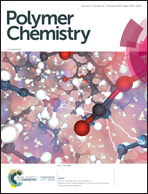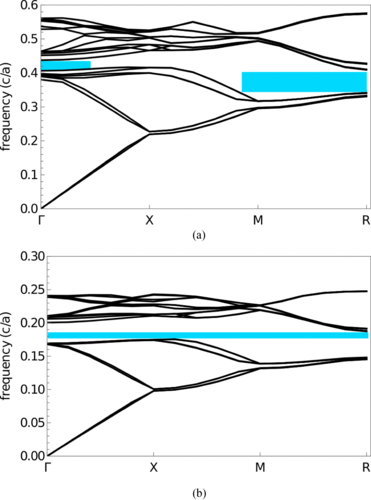Reaction and characterization of a two-stage thermoset
 Unsaturated polyester polyurethane hybrid (UPPH) resins, a relatively new thermoset class, combine the strengths of unsaturated polyester (UP) and polyurethane (PU) technologies. A key motivation for the development of these advanced resin systems is their suitability for application in the progressively expanding use of fibre-reinforced polymers (FRP) in high performance applications within the aerospace, automotive and energy sector. The relevance of understanding the curing process arises from its overall influence on the final material properties and behaviour. Hence, identification of material properties during this process is a necessary task. Performing an experimental characterisation during an active curing process poses a difficult challenge. This is why simulative determination of developing material properties becomes desirable. In a recent article, we model the two-stage curing reaction using all-atom molecular dynamics simulations. The systems are simulated and the results are used to evaluate the chemical reaction process and then to identify the resulting material’s macroscopic properties and behaviour. These properties are determined at different crosslinking stages of the curing process providing a unique insight into the development of these parameters during the chemical reaction.
Unsaturated polyester polyurethane hybrid (UPPH) resins, a relatively new thermoset class, combine the strengths of unsaturated polyester (UP) and polyurethane (PU) technologies. A key motivation for the development of these advanced resin systems is their suitability for application in the progressively expanding use of fibre-reinforced polymers (FRP) in high performance applications within the aerospace, automotive and energy sector. The relevance of understanding the curing process arises from its overall influence on the final material properties and behaviour. Hence, identification of material properties during this process is a necessary task. Performing an experimental characterisation during an active curing process poses a difficult challenge. This is why simulative determination of developing material properties becomes desirable. In a recent article, we model the two-stage curing reaction using all-atom molecular dynamics simulations. The systems are simulated and the results are used to evaluate the chemical reaction process and then to identify the resulting material’s macroscopic properties and behaviour. These properties are determined at different crosslinking stages of the curing process providing a unique insight into the development of these parameters during the chemical reaction.
Photonic band structure of diamond colloidal crystals in a cholesteric liquid crystal
 In this recent paper, we demonstrate the presence of a photonic band gap for a diamond lattice structure made of particles with normal anchoring inside a cholesteric liquid crystal. This makes this system suitable for photonic applications. Photonic systems are similar to electronic systems except the semiconductor which exhibits a band gap for electron transport is replaced with a material with a band gap for photon transmission. As is typical for liquid crystals (LCs), there is considerable contrast between the dielectric constant parallel ε∥ and perpendicular ε⊥ to the director, with ε∥/ε⊥~ 4 here. We show that the size of the photonic band gap is directly related to the size of colloidal particles and the contrast between the dielectric constant in the particles and the extreme values of ε in the LC medium (one needs either ε in the particle much smaller than ε⊥ or much bigger than ε∥). No opening is seen in the band diagrams for small particles. For larger particles a partial gap opens when the particles are composed of very low dielectric material but never a complete gap. On the other hand, a complete gap starts to be revealed when the size of the colloidal particles is increased and when a high dielectric constant is used for filling inside the particles. The maximum size of the gap is observed when the particles are large enough so that their surfaces overlap.
In this recent paper, we demonstrate the presence of a photonic band gap for a diamond lattice structure made of particles with normal anchoring inside a cholesteric liquid crystal. This makes this system suitable for photonic applications. Photonic systems are similar to electronic systems except the semiconductor which exhibits a band gap for electron transport is replaced with a material with a band gap for photon transmission. As is typical for liquid crystals (LCs), there is considerable contrast between the dielectric constant parallel ε∥ and perpendicular ε⊥ to the director, with ε∥/ε⊥~ 4 here. We show that the size of the photonic band gap is directly related to the size of colloidal particles and the contrast between the dielectric constant in the particles and the extreme values of ε in the LC medium (one needs either ε in the particle much smaller than ε⊥ or much bigger than ε∥). No opening is seen in the band diagrams for small particles. For larger particles a partial gap opens when the particles are composed of very low dielectric material but never a complete gap. On the other hand, a complete gap starts to be revealed when the size of the colloidal particles is increased and when a high dielectric constant is used for filling inside the particles. The maximum size of the gap is observed when the particles are large enough so that their surfaces overlap.
Welcome!
Our research focuses on modelling particles and dynamic processes in complex fluids. We study systems involving micro- and nano-scale objects, soft colloids or polymers for instance, in a complex fluid such as a liquid crystal. An important aspect of our work is the development of models and multi-scale computer simulation techniques to investigate these systems.
If you are interested in joining our group, please send me an email. We accept applications any time of the year. For more information about applying see the web page for the graduate program in Physics at Western and mention my group in the application.
